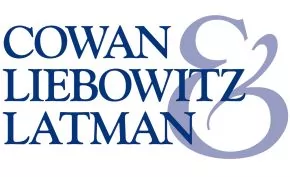A previous Blog post discussed "How to Preserve U.S. Rights in a Registered Trademark that is Not in Use."
Now, a precedential decision by the Trademark Trial and Appeal Board (TTAB) is instructive as to the reverse—how to cancel a U.S. registration for an abandoned trademark.
The origin of this case was a cease-and-desist letter sent to Adamson Systems Engineering, Inc. by Peavey Electronics Corporation, owner of the registered mark CS for "amplifiers." The letter demanded that Adamson stop using and promoting audio speakers and other products under the CS mark. A Peavey advertisement for its CS series of products accompanied that letter.
Adamson responded by petitioning to cancel Peavey's registration on various grounds, including that Peavey had abandoned its mark due to its nonuse.
The TTAB granted Adamson's petition and ordered Peavey's registration cancelled. In doing so, the TTAB applied the rules for successfully cancelling a registration on abandonment grounds.
Standing
As an initial matter, a cancellation petitioner must have an interest falling within the Trademark Act's zone of protected interests. The TTAB stated that the cease-and-desist letter established Adamson's interest. Additionally, Adamson had a reasonable belief in the damage the CS registration would cause to Adamson, and Peavey's advertising established it as a potential competitor to Adamson.
Abandonment Law
The TTAB observed that the Trademark Act was not intended to provide a warehouse for unused marks. Accordingly, it permits cancellation of a registration for an abandoned mark in order that the mark may be used by others in the marketplace. Abandonment can be established one of two ways.
Nonuse. There are two elements to a nonuse abandonment claim: (1) the registrant discontinued its use of the mark, and (2) the registrant had an intent not to resume use.
"Use" means the good faith use of the mark in commerce made in the ordinary course of trade in a manner common to the industry in question, and not made merely to reserve a right in a mark. What constitutes use may vary over time as markets and businesses change. But token sales and sporadic, casual, and nominal shipments of goods have always been insufficient to constitute use of a mark in commerce.
Three consecutive years of nonuse establishes a rebuttable showing of abandonment. The registrant then has the burden of producing the rebuttal evidence, although the party attempting to prove abandonment continues to have the burden of persuasion by a preponderance of the evidence.
Loss of Significance. A registered mark also may be found abandoned when it has become generic or has otherwise lost its significance as a source indicator due to acts of omission or commission by the owner.
Application to the Facts of This Case
The issue in this case was whether Peavey had made good faith use of its mark in commerce during the alleged period of nonuse--2016 to 2021 (the "Time Period"). The TTAB held that Peavey had not:
- Sales Before the Time Period. Substantial domestic sales of CS amplifiers in the five-to-six figure annual range before the Time Period, were irrelevant to this nonuse claim.
- Sales During the Time Period. Domestic sales during the Time Period only averaged one per year, in 2016, 2017, and 2021, and there were no such sales in 2018-2020.
- International Sales. Sales of CS amplifiers in China did not count as use in U.S. commerce. Moreover, the continuing international sales during and after the Time Period showed that Peavey could have furnished inventory to the domestic market but chose not to do so.
The TTAB found that the minimal domestic sales of the CS amplifiers during the Time Period were insufficient to constitute use in commerce, which gave rise to a presumption of abandonment.
Peavey presented arguments and evidence to overcome this presumption, but these were unsuccessful:
- Advertising and Marketing. Peavey said it had spent millions and millions of dollars advertising and marketing its products throughout the years. But "use in commerce" means that the mark is placed on the goods and the goods are sold or transported in commerce. Advertising and marketing alone are insufficient.
- Residual Goodwill. Peavey argued that a mark Is abandoned only when it has lost all trademark significance, including residual goodwill. Although evidence of residual goodwill may negate a finding of abandonment due to a loss of source significance, it does not negate a finding of abandonment for nonuse.
- Resales, Repair and Refurbishment. Peavey stated that there were active resellers, and a repair and refurbishment market. But resales by third parties did not inure to Peavey's benefit, and neither repair shops nor the replacement parts bore the brand. Further, the evidence showed only online advertising and discussion of CS amplifiers, not sales.
- Planned Resumption of Use. Peavey asserted that the Covid-19 pandemic in 2020 had hindered its planned update of the CS series. But a vague, unsubstantiated intent to make use of the mark at some unspecified time in the future, without business records documenting specific activities, fell far short of rebutting the presumption of abandonment.
Accordingly, the cancellation petition was successful, and the TTAB ordered the registration cancelled in due course.
The content of this article is intended to provide a general guide to the subject matter. Specialist advice should be sought about your specific circumstances.

